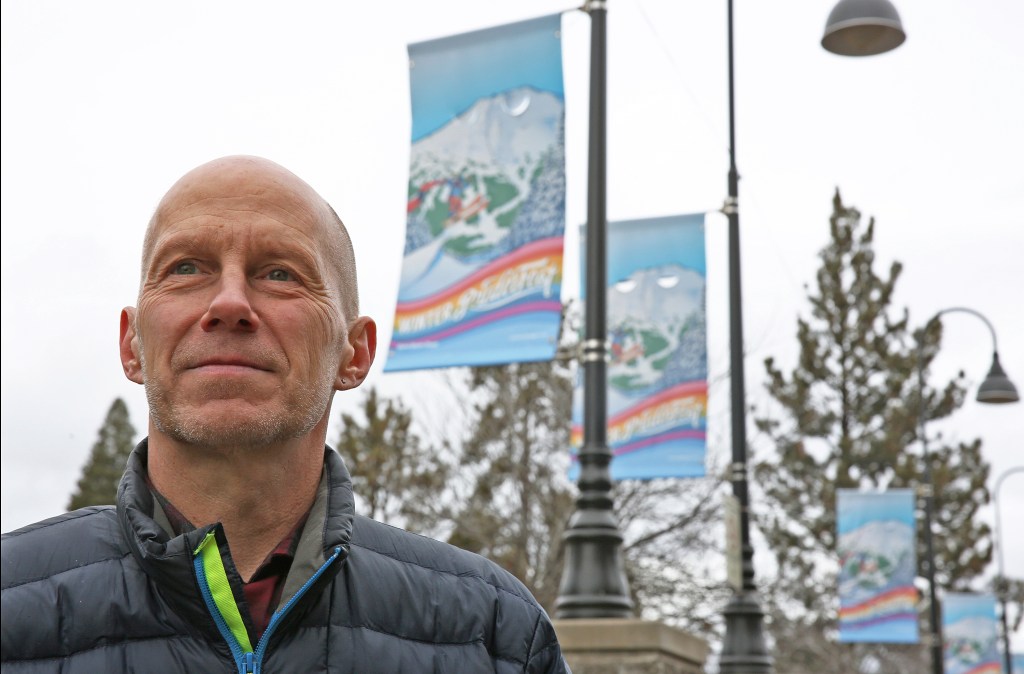Members of the LGBTQ community find home in rural Oregon
Published 12:00 am Thursday, April 2, 2020

- Jamie Nesbitt in downtown Bend.
Jamie Nesbitt has always been attracted to the mountains and outdoor activities. When he and his partner, Richard Scharfenberg, visited an acquaintance in Bend, they quickly fell in love with the area.
Two years later, they left San Francisco, the country’s number one LGBTQ-friendly city, and headed for Central Oregon.
“In the back of my head the dream has always been to move to a smaller town,” he said. “This place has everything I could have ever dreamt of honestly on my list. It’s worked out brilliantly.”
The couple lives on the outskirts of Bend in a house adjacent to Shevlin Park and a national forest, close to miles of trails for hiking and running.
Nesbitt and his partner enjoy hiking, road cycling, trail running, kayaking, skiing, snowshoeing and floating the Deschutes River.
“Bend’s outdoor lifestyle is simply so amazing,” he said. “Everything an outdoor enthusiast enjoys is in close proximity.”
Large population
Nesbitt is one of an estimated 22,300 LGBTQ — lesbian, gay, bisexual, transgender or queer — adults living in rural Oregon. The U.S. Census Bureau doesn’t collect data on sexual orientation or gender identity, but Logan Casey, a policy researcher for the Movement Advancement Project, an independent think tank, based the estimate on the number of LGBTQ adults who live in Oregon — 5.6% of the population — and the percentage that lives in rural areas nationwide, 12%.
Nesbitt, 57, identifies as gay, and said that being LGBTQ is different now than it was 10 to 20 years ago.
“I feel like (rural areas) have gotten more accepting because the world has gotten more accepting,” he said.
When he first moved to Bend, he noticed that LGBTQ visibility was limited, as were opportunities for folks to get together. He decided to help form an organization that would sponsor events for the LGBTQ community. He is now president of the nonprofit OUT Central Oregon, which hosts Winter PrideFest and other events, as well as promotes education and outreach for human immunodeficiency virus (HIV) testing.
“You heard about horrible things happening to people who are queer, and I understand why organizations wouldn’t want to be more visible, but the timing is different now,” he said.
Seeking acceptance
To the south of Bend in the Klamath Basin, lives 27-year-old Wakaya Wells, who identifies as queer.
Wells has lived exclusively in rural areas of the U.S. Wells, who is a member of the Choctaw nation, grew up in Oklahoma before moving to the Klamath Basin. There, Wells found the LGBTQ community to be visible and people in the area accepting of it.
“Even though it is what people feel is a conservative town, it wasn’t difficult upon moving here to find representation and find people who are out in the community,” Wells said, adding that there is also a large network of people familiar with LGBTQ terminology.
There is also an added dimension of difficulty that comes with being a person of color in the LGBTQ community, Wells said, noting Oregon still has work to be done in addressing race.
“It’s important people educate themselves and learn to be accepting and be allies,” Wells said. “It’s not the job of us to constantly educate and make everything right. It’s the responsibility of the community, of the population.”
Franny Howes, 35, is also from Klamath Falls and identifies as queer. She said that while acceptance of lesbians, gays and bisexuals is widely seen, transgender inclusion is still catching up.
“It’s not so much overt transphobia, but there’s not as much knowledge about pronouns and nonbinary people,” she explained. “It’s not that I’ve been met with hostility but more curiosity. That, I can work with.”
Although the isolation of rural Oregon adds to the challenges of dating, Howes said that her connection to the LGBTQ community has been stronger in rural Oregon than anywhere else she’s lived.
Wells added the idea that “our stories and identities don’t exist is kind of silly,” and the way mass media portray rural settings perpetuates that.
PrideFest
At the end of January, OUT Central Oregon held its annual Winter PrideFest, drawing approximately 750 people.
“Most of the U.S. would never guess that there was gay life in Central Oregon, honestly,” Nesbitt said. “Our efforts are changing that. With any rural areas there’s a tendency that it’s going to be more conservative individuals, but those beliefs are limited that way due to a lack of exposure.”
The issue, he said, boils down to one of familiarity.
“It’s back to the visibility of, ‘They’re as human as I am.’”


